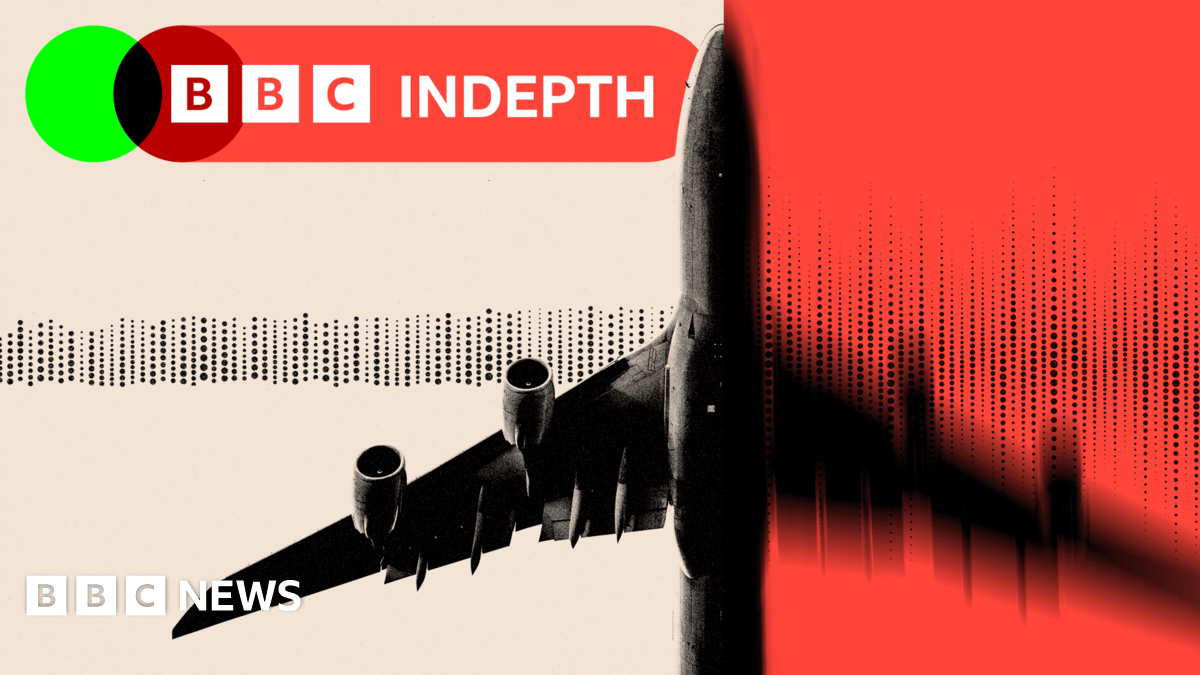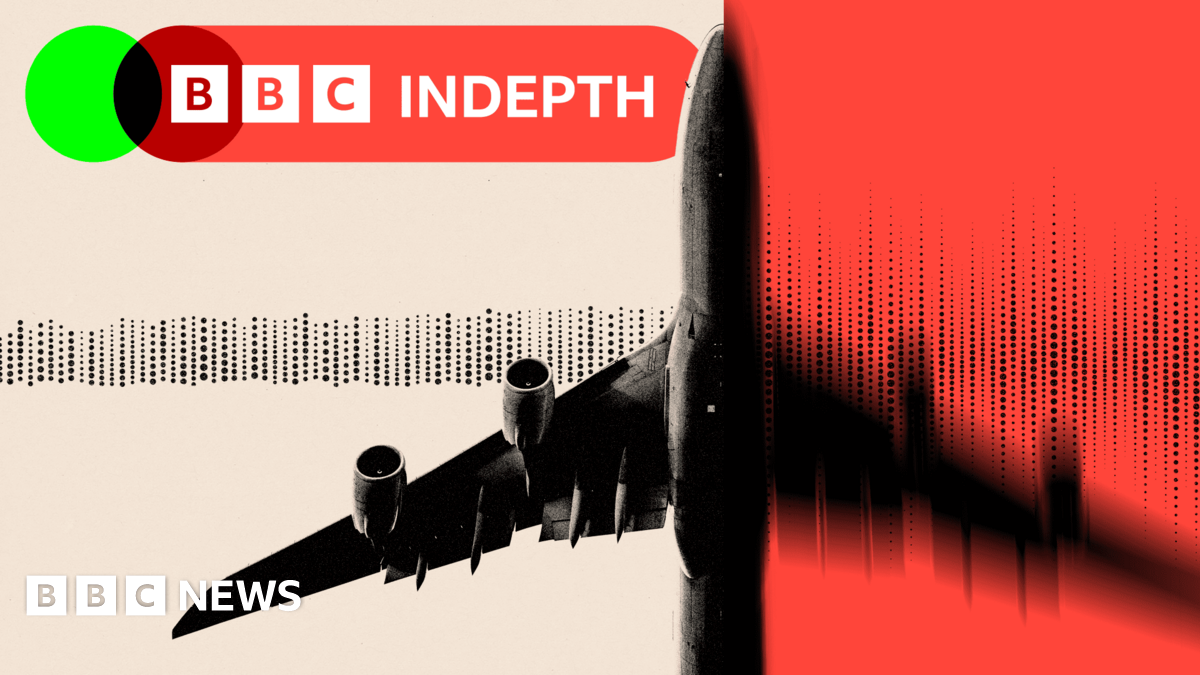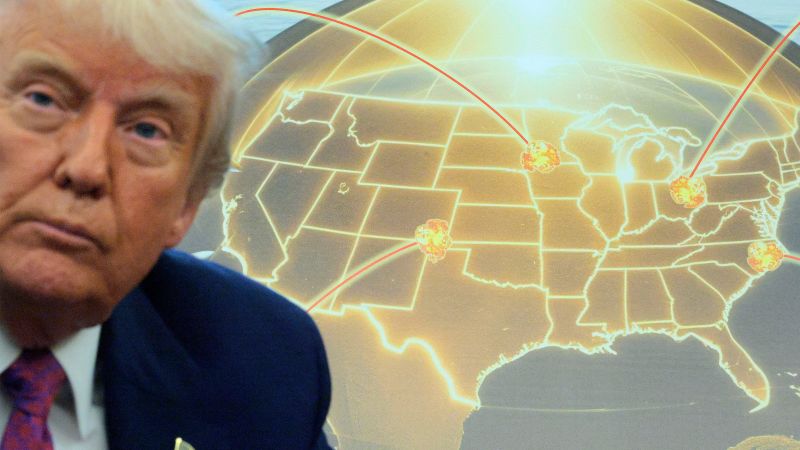Why Plane Turbulence Is Increasing: A Scientific Look At The Causes

Welcome to your ultimate source for breaking news, trending updates, and in-depth stories from around the world. Whether it's politics, technology, entertainment, sports, or lifestyle, we bring you real-time updates that keep you informed and ahead of the curve.
Our team works tirelessly to ensure you never miss a moment. From the latest developments in global events to the most talked-about topics on social media, our news platform is designed to deliver accurate and timely information, all in one place.
Stay in the know and join thousands of readers who trust us for reliable, up-to-date content. Explore our expertly curated articles and dive deeper into the stories that matter to you. Visit Best Website now and be part of the conversation. Don't miss out on the headlines that shape our world!
Table of Contents
Why Plane Turbulence Is Increasing: A Scientific Look at the Causes
Air travel, once a symbol of smooth, efficient transportation, is increasingly encountering a bumpy ride. Reports of intensified turbulence are on the rise, leaving passengers anxious and airlines scrambling for solutions. But why is plane turbulence increasing? The answer isn't simple, but a confluence of scientific factors points towards a concerning trend.
The Climate Change Connection: This is arguably the most significant factor contributing to the rise in turbulence. Climate change is altering atmospheric patterns globally, leading to stronger jet streams – the fast-flowing air currents high in the atmosphere that often cause clear-air turbulence (CAT). These intensified jet streams create more pronounced wind shear, a sudden change in wind speed and direction, which is a primary cause of unexpected turbulence. Studies published in journals like Nature Climate Change have directly linked the increasing intensity and variability of jet streams to global warming.
Understanding Different Types of Turbulence:
Before delving further, it's crucial to understand the various types of turbulence encountered during flights:
- Clear-Air Turbulence (CAT): This unpredictable form of turbulence occurs outside of visible weather systems, making it particularly challenging to detect and avoid. It's often associated with strong wind shear in the jet stream.
- Convective Turbulence: This type of turbulence is associated with thunderstorms and other convective weather systems. Rising warm air creates unstable atmospheric conditions, leading to significant bumps and jolts.
- Wake Turbulence: This is caused by the vortices shed from the wingtips of large aircraft. It's a significant hazard for smaller aircraft following closely behind larger ones.
Beyond Climate Change: Other Contributing Factors:
While climate change plays a major role, other factors exacerbate the problem:
- Improved Aircraft Technology: Ironically, advancements in aircraft technology contribute to the increased reporting of turbulence. Modern aircraft are more sensitive to even minor atmospheric disturbances, leading to a greater perception of turbulence, even if the actual severity is relatively low.
- Increased Air Traffic: More flights in the air mean a greater chance of encountering turbulence, particularly in congested airspace.
- Lack of Comprehensive Detection Systems: Current weather radar systems are not always effective at detecting CAT, making it difficult for pilots to completely avoid turbulent areas. Research into advanced detection technologies is ongoing.
What Can Be Done?
Addressing the increase in turbulence requires a multi-pronged approach:
- Investing in Advanced Turbulence Detection Systems: Improved weather forecasting models and real-time turbulence detection systems are critical for mitigating the risk. Research into satellite-based detection and AI-powered prediction models holds considerable promise.
- Pilot Training and Awareness: Pilots need to be adequately trained to handle various types of turbulence and effectively communicate with passengers.
- Addressing Climate Change: Ultimately, mitigating the effects of climate change is crucial to reducing the severity and frequency of turbulence. This requires global cooperation and a transition towards sustainable energy sources.
The Future of Air Travel and Turbulence:
The increasing frequency and intensity of plane turbulence pose a significant challenge to the aviation industry. While completely eliminating turbulence is unrealistic, investing in research, technology, and climate-conscious practices can significantly reduce its impact on passenger comfort and safety. Staying informed about the latest research and developments in this field is crucial for both passengers and the aviation community. This ongoing challenge requires collaborative efforts from scientists, engineers, pilots, and policymakers to ensure smoother skies for years to come.

Thank you for visiting our website, your trusted source for the latest updates and in-depth coverage on Why Plane Turbulence Is Increasing: A Scientific Look At The Causes. We're committed to keeping you informed with timely and accurate information to meet your curiosity and needs.
If you have any questions, suggestions, or feedback, we'd love to hear from you. Your insights are valuable to us and help us improve to serve you better. Feel free to reach out through our contact page.
Don't forget to bookmark our website and check back regularly for the latest headlines and trending topics. See you next time, and thank you for being part of our growing community!
Featured Posts
-
 Navigating The Trade War Analyzing Trumps Eu Strategy For China
Aug 01, 2025
Navigating The Trade War Analyzing Trumps Eu Strategy For China
Aug 01, 2025 -
 The Growing Problem Of Air Turbulence Causes Effects And What You Can Do
Aug 01, 2025
The Growing Problem Of Air Turbulence Causes Effects And What You Can Do
Aug 01, 2025 -
 Impact Of Reduced Federal Loan Limits On Law School And Medical School Enrollment
Aug 01, 2025
Impact Of Reduced Federal Loan Limits On Law School And Medical School Enrollment
Aug 01, 2025 -
 30 Million Fraud Oyster Bay Resident Pleads Guilty In Political Influence Case
Aug 01, 2025
30 Million Fraud Oyster Bay Resident Pleads Guilty In Political Influence Case
Aug 01, 2025 -
 Loss At Reagan National Airport Spurs Campaign For Enhanced Aviation Safety
Aug 01, 2025
Loss At Reagan National Airport Spurs Campaign For Enhanced Aviation Safety
Aug 01, 2025
Latest Posts
-
 Cornwall Mums Death Could Older Driver Rule Changes Have Saved Her Life
Aug 02, 2025
Cornwall Mums Death Could Older Driver Rule Changes Have Saved Her Life
Aug 02, 2025 -
 Ukraine Zelensky Concedes To Youth Demands Averts Crisis
Aug 02, 2025
Ukraine Zelensky Concedes To Youth Demands Averts Crisis
Aug 02, 2025 -
 Golden Dome Missile Defense First Major Pentagon Test Planned Before 2028
Aug 02, 2025
Golden Dome Missile Defense First Major Pentagon Test Planned Before 2028
Aug 02, 2025 -
 Back To Basics Trump Brings Back The Presidential Fitness Test For Schools
Aug 02, 2025
Back To Basics Trump Brings Back The Presidential Fitness Test For Schools
Aug 02, 2025 -
 Trumps 200 Million White House Ballroom Construction Starts September
Aug 02, 2025
Trumps 200 Million White House Ballroom Construction Starts September
Aug 02, 2025
